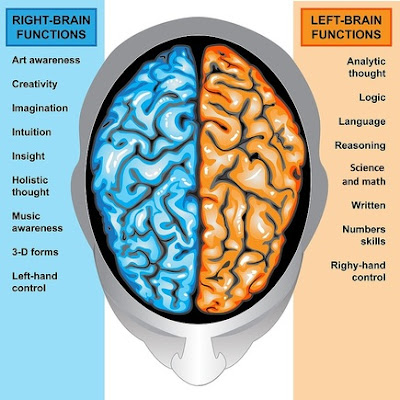Psychology 9-1 GCSE -
4.1.2 - Understand the lateralisation of function in the
hemispheres, including:
a) Asymmetrical function -
Ellegood et al found that 'autistic' mice showed more symmetry between the left and right hemispheres of the cerebellum when compared to controls without mutations in the autism genes. Interestingly, the 'autistic' mice showed more asymmetry between the left and right hemispheres of the cerebellum. A wide range of studies have found that cerebellum size and functional connectivity is correlated with autism-related functions. Such as emotion, regulation and attention.
b) Role of the left hemispheres -c) Role of the right hemispheres -
 |
| Brain hemispheres and their functions |
d) Role of the corpus callosum -
The corpus callosum consists of about 200 million axons that interconnect the two hemispheres. The primary function of the corpus callosum is to intergrate motor, sensory and cognitive performances between the cerebral cortex on one side of the brain to the same reigion on the other side.
e) Strengths and weaknesses of lateralisation as an explanation of sex differences between males and females -
Laterelisation is the idea that the two halves of the brain are functionally different and that each hemisphere has functional specialisations, e.g the left is dominant for language and the right excels at motor tasks. Sex differences in spatial cognitions are considered among the largest sex differences in all of cognitive ability (Collucia and Louse 2004). The general basis of the theory that that lateralisation effects this differences is the more lateralized the brain is while completing the task, the more efficient the processing. Research suggests that male brains tend to use the right side more than the left. (i.e more lateralized) for spacial tasks while womens' brains use both left and right hemisphere (i.e are more symmetrical)(Rilea 2008).
Comments
Post a Comment